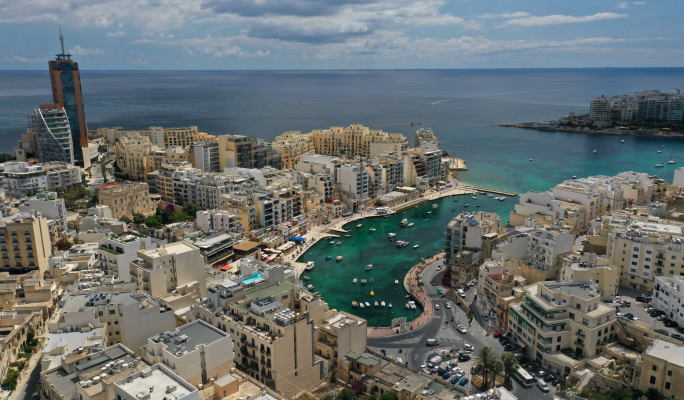Malta’s commercial real estate (CRE) lending remains concentrated in a handful of key localities, with St Julian’s emerging as the primary centre for such loans.
St Julian’s accounts for the largest share of outstanding CRE loans, just under €160 million, over 12% of total bank loans for commercial properties.
This emerges from the Central Bank of Malta’s Financial Stability Report 2024, which includes a chapter on Domestic Banks’ Exposures to the Commercial Real Estate Market, authored by Ariana Bartolo and Shaun Zafferese.
More than half of the loans in St Julian’s were for retail business properties—a broad category that includes hotels, restaurants, and shopping malls—followed by mixed-use developments with both commercial and residential components.
Following St Julian’s, Birkirkara and Sliema also represent significant CRE lending hubs, each with loan values exceeding €120 million.
While most loans in Birkirkara were directed at office developments, Sliema had a larger share allocated to business and retail properties.
Together, St Julian’s, Birkirkara, and Sliema accounted for 32.9% of total outstanding CRE loans at the end of 2024
Sliema is followed by Valletta, which attracted over €80 million in loans, spread across retail business properties, mixed-use developments, and a smaller office segment. St Paul’s Bay closely trails Valletta, but in this locality, most loans were directed toward retail business properties reflecting the predominance of tourism in this locality.
Other localities attracting more than €40 million in loans include Naxxar, Qormi, Mellieħa, and Gżira. San Gwann which has a larger office component, closely trailed Gzira at just under €40 million.
Loans for industrial development prevailed in Gudja, Marsa and Birżebbuġa. Overall, retail business properties form the largest share of CRE loans, representing just over one-third of total outstanding lending. These include properties such as hotels, restaurants, and shopping malls, which remain central to local commercial activity. Office properties constitute the next largest segment, followed by industrial properties, which account for around 11% of CRE loans and include facilities used for production, distribution, and logistics.
Mixed-use properties—combining commercial and residential uses—along with garages and parking facilities, make up a smaller portion of the portfolio. Other types of commercial real estate loans, not specifically categorised, complete the overall distribution.
According to the report, all outstanding CRE loans are collateralised, with the vast majority secured by the financed real estate itself. This high level of collateralisation helps mitigate potential losses in the event of borrower default, as banks retain the ability to foreclose on and liquidate properties.
From a financial stability perspective, domestic CRE lending remains relatively modest compared to the residential real estate market. However, it holds particular significance among core domestic banks, where CRE loans represent a notable share of loan portfolios. Despite this, the average loan-to-value ratio remains contained, and only a limited share of CRE loans is currently impaired or in default.
From COVID-19 to climate change
The analysis also notes the impact of the COVID-19 pandemic, which led to a decline in demand across certain CRE segments—especially office spaces and retail properties. Anecdotal evidence from banks cited possible oversupply in some property types and continued reduced demand for office space, reflecting broader shifts in work patterns.
Additionally, evolving climate-related risks, such as rising temperatures and flood exposure, are gradually beginning to influence investment decisions and risk assessments in the real estate sector. The report suggests that risk assessments should incorporate data on building sustainability, especially for the largest exposures, to better evaluate potential climate-related risks.
This assessment is based on data collected up to the end of 2024, with the credit value of identified CRE loans standing at approximately €1.3 billion—representing 13% of the total outstanding real estate loan value reported.
